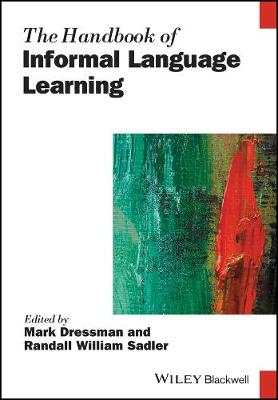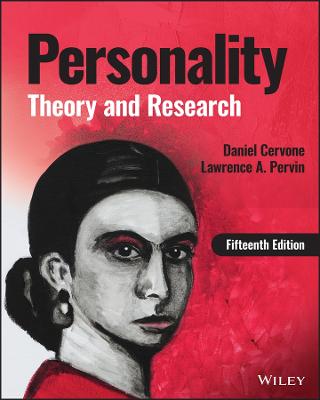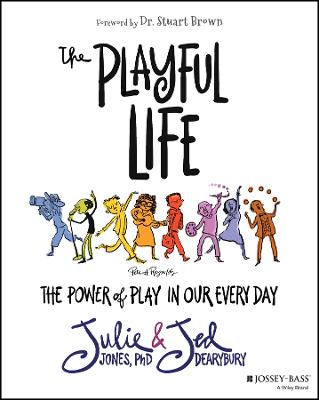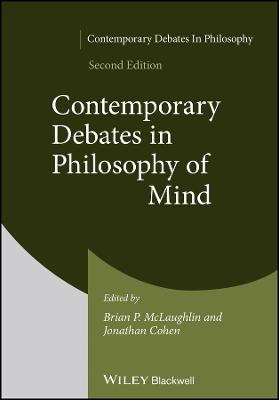What Works with Adolescents Who Have offended
 -10%
portes grátis
-10%
portes grátis
What Works with Adolescents Who Have offended
Theory, Research, and Practice
Wormith, J. Stephen; Dixon, Louise; Craig, Leam A.; Langton, Calvin M.; Worling, James R.
John Wiley and Sons Ltd
07/2025
480
Mole
9781119591047
Pré-lançamento - envio 15 a 20 dias após a sua edição
Descrição não disponível.
Section 1: Foundations
Chapter 1: What we know about what works and how we know it: Broad findings
and methodological issues in evaluation research with adolescents who
have offended.
Calvin Langton
Chapter 2: Juvenile justice models and theories of youth crime and delinquency:
Implications for what works.
Robert Hoge
Chapter 3: Adolescent brain development and crime: Implications for what works.
Eamon McCrory
Chapter 4: Youth crime and violence: Contributions from developmental criminology.
David Farrington
Chapter 5: Pathways into and out of youth crime: Implications for what works.
Lesley McAra
Chapter 6: Ethical and professional issues in work with adolescents who have offended.
Alan Leschied
Chapter 7: Evidence-based clinical and forensic assessment work with adolescents
who have offended.
Calvin Langton
Section 2: Distinct Groups and Populations
Chapter 8: Adolescent girls and crime: What works.
Loraine Gelsthorpe
Chapter 9: Race, ethnicity, and cultural considerations with adolescents who have
offended: Implications for what works.
Colin Webster
Chapter 10: Crossover youth: What works.
Denise Herz
Chapter 11: What works with adolescents involved in gang crimes and violence.
Angela Higginson
Chapter 12: What works with adolescents who have sexually abused others.
James Worling
Chapter 13: What works with adolescents who set fires.
Ian Lambie
Section 3: Clinical syndromes and disorders
Chapter 14: Mental health needs in adolescent offenders: Implications for what works.
Gail A. Wasserman
Chapter 15: Intellectual disabilities, learning disabilities, and youth criminality: What
works.
Christopher J. Lennings
Chapter 16: Fetal Alcohol Syndrome and youth criminality: What works.
Paul D. Connor
Chapter 17: Attention deficit hyperactivity disorder and youth criminality: What works.
Rene L. Olver
Chapter 18: Oppositional defiant disorder, conduct disorder and youth criminality: What works
Robert McMahon
Chapter 19: Psychopathy and youth crime: What works.
Henrik Andershed
Chapter 20: Post-traumatic stress disorder, complex trauma, and youth crime: What works.
Julian D. Ford
Chapter 21: Substance-related disorders and youth crime: What works.
Phillipe B. Cunningham
Section 4: Timing and nature of interventions
Chapter 22: Prevention of youth crime and delinquency: What works.
Brandon Welsh
Chapter 23: Early interventions with pre-adolescent children at high risk of youth justice involvement.
Leena Augimeri
Chapter 24: Diversion programs with adolescent offenders: What works.
Craig S. Schwalbe
Chapter 25: Restorative justice with adolescents who have offended. What works.
Chris Cunneen
Chapter 26: Transition and aftercare with adolescents who have offended: What works.
Eric Trupin
Chapter 27: Family therapy approaches to adolescents who have offended: What works.
Scott W. Henggeler
Chapter 28: Cognitive behavior therapy approaches to adolescents who have offended: What works.
Vicente Garrido
Section 5: Future directions
Chapter 29: Looking forward: The lessons learned and challenges ahead in intervention work with adolescents who have offended.
Barry Goldson
Chapter 1: What we know about what works and how we know it: Broad findings
and methodological issues in evaluation research with adolescents who
have offended.
Calvin Langton
Chapter 2: Juvenile justice models and theories of youth crime and delinquency:
Implications for what works.
Robert Hoge
Chapter 3: Adolescent brain development and crime: Implications for what works.
Eamon McCrory
Chapter 4: Youth crime and violence: Contributions from developmental criminology.
David Farrington
Chapter 5: Pathways into and out of youth crime: Implications for what works.
Lesley McAra
Chapter 6: Ethical and professional issues in work with adolescents who have offended.
Alan Leschied
Chapter 7: Evidence-based clinical and forensic assessment work with adolescents
who have offended.
Calvin Langton
Section 2: Distinct Groups and Populations
Chapter 8: Adolescent girls and crime: What works.
Loraine Gelsthorpe
Chapter 9: Race, ethnicity, and cultural considerations with adolescents who have
offended: Implications for what works.
Colin Webster
Chapter 10: Crossover youth: What works.
Denise Herz
Chapter 11: What works with adolescents involved in gang crimes and violence.
Angela Higginson
Chapter 12: What works with adolescents who have sexually abused others.
James Worling
Chapter 13: What works with adolescents who set fires.
Ian Lambie
Section 3: Clinical syndromes and disorders
Chapter 14: Mental health needs in adolescent offenders: Implications for what works.
Gail A. Wasserman
Chapter 15: Intellectual disabilities, learning disabilities, and youth criminality: What
works.
Christopher J. Lennings
Chapter 16: Fetal Alcohol Syndrome and youth criminality: What works.
Paul D. Connor
Chapter 17: Attention deficit hyperactivity disorder and youth criminality: What works.
Rene L. Olver
Chapter 18: Oppositional defiant disorder, conduct disorder and youth criminality: What works
Robert McMahon
Chapter 19: Psychopathy and youth crime: What works.
Henrik Andershed
Chapter 20: Post-traumatic stress disorder, complex trauma, and youth crime: What works.
Julian D. Ford
Chapter 21: Substance-related disorders and youth crime: What works.
Phillipe B. Cunningham
Section 4: Timing and nature of interventions
Chapter 22: Prevention of youth crime and delinquency: What works.
Brandon Welsh
Chapter 23: Early interventions with pre-adolescent children at high risk of youth justice involvement.
Leena Augimeri
Chapter 24: Diversion programs with adolescent offenders: What works.
Craig S. Schwalbe
Chapter 25: Restorative justice with adolescents who have offended. What works.
Chris Cunneen
Chapter 26: Transition and aftercare with adolescents who have offended: What works.
Eric Trupin
Chapter 27: Family therapy approaches to adolescents who have offended: What works.
Scott W. Henggeler
Chapter 28: Cognitive behavior therapy approaches to adolescents who have offended: What works.
Vicente Garrido
Section 5: Future directions
Chapter 29: Looking forward: The lessons learned and challenges ahead in intervention work with adolescents who have offended.
Barry Goldson
Este título pertence ao(s) assunto(s) indicados(s). Para ver outros títulos clique no assunto desejado.
Section 1: Foundations
Chapter 1: What we know about what works and how we know it: Broad findings
and methodological issues in evaluation research with adolescents who
have offended.
Calvin Langton
Chapter 2: Juvenile justice models and theories of youth crime and delinquency:
Implications for what works.
Robert Hoge
Chapter 3: Adolescent brain development and crime: Implications for what works.
Eamon McCrory
Chapter 4: Youth crime and violence: Contributions from developmental criminology.
David Farrington
Chapter 5: Pathways into and out of youth crime: Implications for what works.
Lesley McAra
Chapter 6: Ethical and professional issues in work with adolescents who have offended.
Alan Leschied
Chapter 7: Evidence-based clinical and forensic assessment work with adolescents
who have offended.
Calvin Langton
Section 2: Distinct Groups and Populations
Chapter 8: Adolescent girls and crime: What works.
Loraine Gelsthorpe
Chapter 9: Race, ethnicity, and cultural considerations with adolescents who have
offended: Implications for what works.
Colin Webster
Chapter 10: Crossover youth: What works.
Denise Herz
Chapter 11: What works with adolescents involved in gang crimes and violence.
Angela Higginson
Chapter 12: What works with adolescents who have sexually abused others.
James Worling
Chapter 13: What works with adolescents who set fires.
Ian Lambie
Section 3: Clinical syndromes and disorders
Chapter 14: Mental health needs in adolescent offenders: Implications for what works.
Gail A. Wasserman
Chapter 15: Intellectual disabilities, learning disabilities, and youth criminality: What
works.
Christopher J. Lennings
Chapter 16: Fetal Alcohol Syndrome and youth criminality: What works.
Paul D. Connor
Chapter 17: Attention deficit hyperactivity disorder and youth criminality: What works.
Rene L. Olver
Chapter 18: Oppositional defiant disorder, conduct disorder and youth criminality: What works
Robert McMahon
Chapter 19: Psychopathy and youth crime: What works.
Henrik Andershed
Chapter 20: Post-traumatic stress disorder, complex trauma, and youth crime: What works.
Julian D. Ford
Chapter 21: Substance-related disorders and youth crime: What works.
Phillipe B. Cunningham
Section 4: Timing and nature of interventions
Chapter 22: Prevention of youth crime and delinquency: What works.
Brandon Welsh
Chapter 23: Early interventions with pre-adolescent children at high risk of youth justice involvement.
Leena Augimeri
Chapter 24: Diversion programs with adolescent offenders: What works.
Craig S. Schwalbe
Chapter 25: Restorative justice with adolescents who have offended. What works.
Chris Cunneen
Chapter 26: Transition and aftercare with adolescents who have offended: What works.
Eric Trupin
Chapter 27: Family therapy approaches to adolescents who have offended: What works.
Scott W. Henggeler
Chapter 28: Cognitive behavior therapy approaches to adolescents who have offended: What works.
Vicente Garrido
Section 5: Future directions
Chapter 29: Looking forward: The lessons learned and challenges ahead in intervention work with adolescents who have offended.
Barry Goldson
Chapter 1: What we know about what works and how we know it: Broad findings
and methodological issues in evaluation research with adolescents who
have offended.
Calvin Langton
Chapter 2: Juvenile justice models and theories of youth crime and delinquency:
Implications for what works.
Robert Hoge
Chapter 3: Adolescent brain development and crime: Implications for what works.
Eamon McCrory
Chapter 4: Youth crime and violence: Contributions from developmental criminology.
David Farrington
Chapter 5: Pathways into and out of youth crime: Implications for what works.
Lesley McAra
Chapter 6: Ethical and professional issues in work with adolescents who have offended.
Alan Leschied
Chapter 7: Evidence-based clinical and forensic assessment work with adolescents
who have offended.
Calvin Langton
Section 2: Distinct Groups and Populations
Chapter 8: Adolescent girls and crime: What works.
Loraine Gelsthorpe
Chapter 9: Race, ethnicity, and cultural considerations with adolescents who have
offended: Implications for what works.
Colin Webster
Chapter 10: Crossover youth: What works.
Denise Herz
Chapter 11: What works with adolescents involved in gang crimes and violence.
Angela Higginson
Chapter 12: What works with adolescents who have sexually abused others.
James Worling
Chapter 13: What works with adolescents who set fires.
Ian Lambie
Section 3: Clinical syndromes and disorders
Chapter 14: Mental health needs in adolescent offenders: Implications for what works.
Gail A. Wasserman
Chapter 15: Intellectual disabilities, learning disabilities, and youth criminality: What
works.
Christopher J. Lennings
Chapter 16: Fetal Alcohol Syndrome and youth criminality: What works.
Paul D. Connor
Chapter 17: Attention deficit hyperactivity disorder and youth criminality: What works.
Rene L. Olver
Chapter 18: Oppositional defiant disorder, conduct disorder and youth criminality: What works
Robert McMahon
Chapter 19: Psychopathy and youth crime: What works.
Henrik Andershed
Chapter 20: Post-traumatic stress disorder, complex trauma, and youth crime: What works.
Julian D. Ford
Chapter 21: Substance-related disorders and youth crime: What works.
Phillipe B. Cunningham
Section 4: Timing and nature of interventions
Chapter 22: Prevention of youth crime and delinquency: What works.
Brandon Welsh
Chapter 23: Early interventions with pre-adolescent children at high risk of youth justice involvement.
Leena Augimeri
Chapter 24: Diversion programs with adolescent offenders: What works.
Craig S. Schwalbe
Chapter 25: Restorative justice with adolescents who have offended. What works.
Chris Cunneen
Chapter 26: Transition and aftercare with adolescents who have offended: What works.
Eric Trupin
Chapter 27: Family therapy approaches to adolescents who have offended: What works.
Scott W. Henggeler
Chapter 28: Cognitive behavior therapy approaches to adolescents who have offended: What works.
Vicente Garrido
Section 5: Future directions
Chapter 29: Looking forward: The lessons learned and challenges ahead in intervention work with adolescents who have offended.
Barry Goldson
Este título pertence ao(s) assunto(s) indicados(s). Para ver outros títulos clique no assunto desejado.







